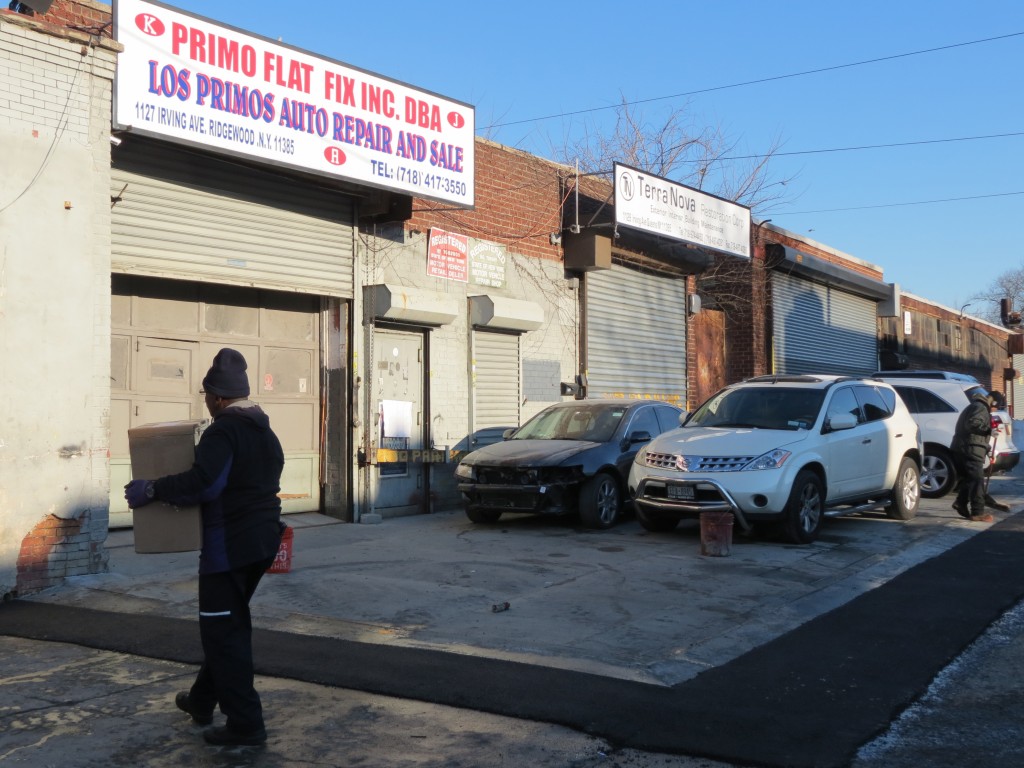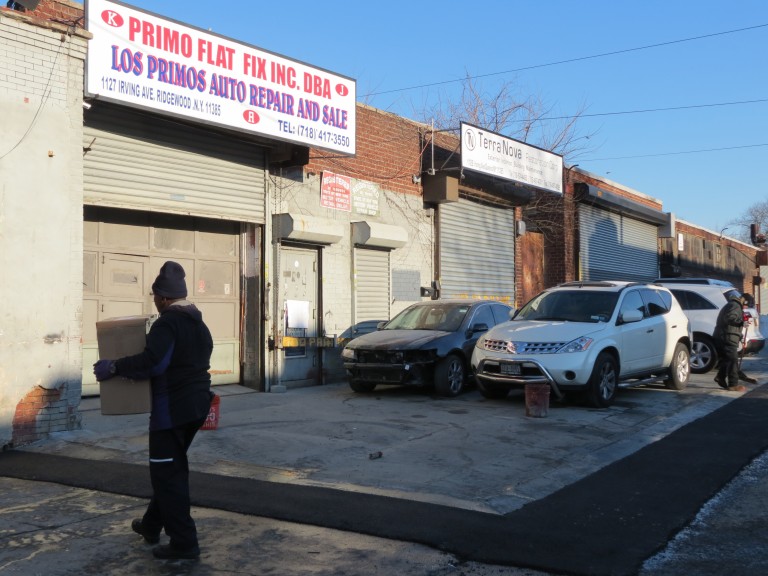
The federal government has proposed listing the former home of the Wolff-Alport Chemical Company in Ridgewood as a Superfund in order to clean up radiation in the area. Anna Gustafson/The Forum Newsgroup
When Victor Gonzalez discovered that the federal government would likely add a Ridgewood site – once home to a now-defunct company that developed materials for the Atomic Energy Commission and dumped radioactive waste into the sewer and onto the land – to its Superfund list, he was angry – but not surprised.
“They should’ve done something much earlier about this,” said Gonzalez, who has for years made deliveries to Los Primos Auto Repair, a business located on the site that the U.S. Environmental Protection Agency has proposed to name a Superfund. “What about the health of all the people who have worked here? What about my health? I was treated for prostate cancer for two years – did I get that because of this? I’m very concerned.”
The EPA announced last week it was proposing to designate the “radioactive” site of the former Wolff-Alport Chemical Company – which covered 1125 to 1139 Irving Ave. and 1514 Cooper Ave. in Ridgewood – as a Superfund spot, which allows the federal government to clean up radiation. The Superfund list is a compilation of the country’s most hazardous waste sites.
The former chemical company operated from 1920 to 1954 and processed imported monazite sand and extracted rare earth metals for the Atomic Energy Commission and the Manhattan Project. Monazite contains approximately 6 to 8 percent thorium, which is radioactive – and radiation can increase the likelihood that someone exposed to it could be diagnosed with cancer.
According to the EPA, the soil and some nearby sewers are contaminated by residual radioactive contamination, though federal officials said testing indicates that there is no immediate threat to nearby residents or employees and customers of businesses in the affected area. The EPA in 2012 began taking steps to reduce people’s potential exposure to the radiation and to address the potential health risks from the site.
“By adding the site to the Superfund list, the EPA can continue its work to protect people living and working in the area from long-term exposure to radiation from this site,” EPA Regional Administrator Judith Enck said.
While representatives from the impacted businesses said they welcomed cleanup efforts, many echoed Gonzalez’s statement that such mediation should have been done long ago. Manuela, a resident who lives a couple houses away from the site and did not want to give her last name, said she knows of a number of women in the area who have had breast cancer and said she was furious that such health problems could have stemmed from radiation at the Ridgewood site.
“All those hospital bills, all the time you had to take off from work, all of that – could it have been prevented if the government had done something about this earlier?” she asked. “It’s a shame.”
The impacted area consists of six parcels of land with five buildings that house several small businesses, office space and warehouses. Employees at some of the businesses said they had not been told of the radiation concerns when they began renting the space for their shops.
“Why were people not told?” Gonzalez asked. “Business owners need to know about these things. That can’t happen.”
EPA officials said they are working hard to eliminate health concerns now. Between August 2012 and December 2013, the EPA conducted work to better understand site conditions and reduce the potential exposure of workers and area residents to the contamination. Indoor air samples were collected at the Primo Auto Body Shop, the Terra Nova Construction Company, the Arctic Glacier ice-making facility, the Jarabuacoa Deli and the apartments above, as well as the nearby Audrey Johnson Daycare and Intermediate School 384.
Where necessary, the EPA said it took action to protect people from exposure in the short-term. At Intermediate School 384, radioactive gas was coming from a hole in an unoccupied storage area. The hole was sealed with concrete. At the Terra Nova Construction Company, increased levels were found in a small office, and the EPA installed a mitigation system that reduced radiation.
Additional efforts made by the EPA include placing concrete and steel under building floors and across the sidewalk to reduce potential exposure and installing systems to reduce radioactive gas inside businesses.
To learn more about this site and submit comments on the Superfund proposal, go to www.epa.gov/superfund/sites/npl/pubcom.htm.
By Anna Gustafson

